Abstract
Chloroplast genomes of Douglas-fir [Pseudotsuga menziesii (Mirb.) Franco] and radiata (Monterey) pine [Pinus radiata D. Don], two conifers from the widespread Pinaceae, were mapped and their genomes were compared to other land plants. Douglas-fir and radiata pine lack the large (20-25 kilobases) inverted repeat that characterizes most land plants. To our knowledge, this is only the second recorded loss of this ancient and highly conserved inverted repeat among all lineages of land plants thus far examined. Loss of the repeat largely accounts for the small size of the conifer genome, 120 kilobase, versus 140-160 kilobases in most land plants. Douglas-fir possesses a major inversion of 40-50 kilobases relative to radiata pine and nonconiferous plants. Nucleotide sequence differentiation between Douglas-fir and radiata pine was estimated to be 3.8%. Both conifer genomes possess a number of rearrangements relative to Osmunda, a fern, Ginkgo, a gymnosperm, and Petunia, an angiosperm. Among land plants, structural changes of this degree have occurred primarily within tribes of the legume family (Fabaceae) that have also lost the inverted repeat. These results support the hypothesis that the presence of the large inverted repeat stabilizes the chloroplast genome against major structural rearrangements.
Full text
PDF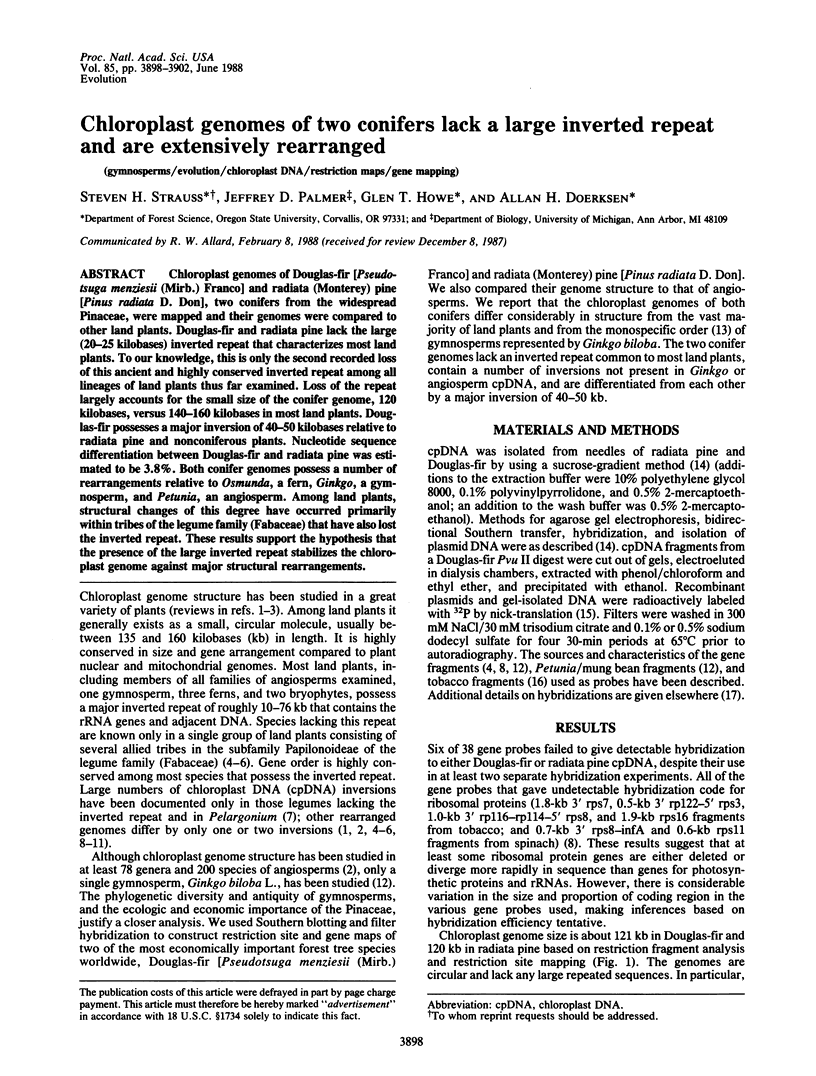
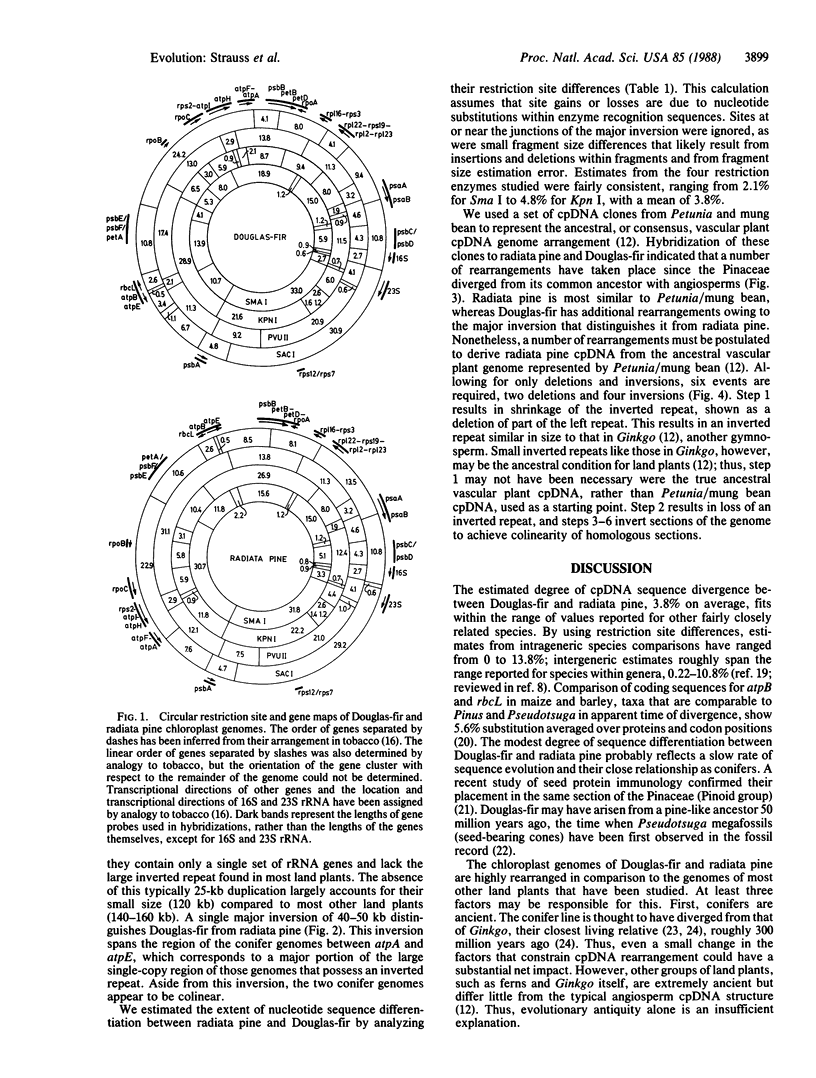
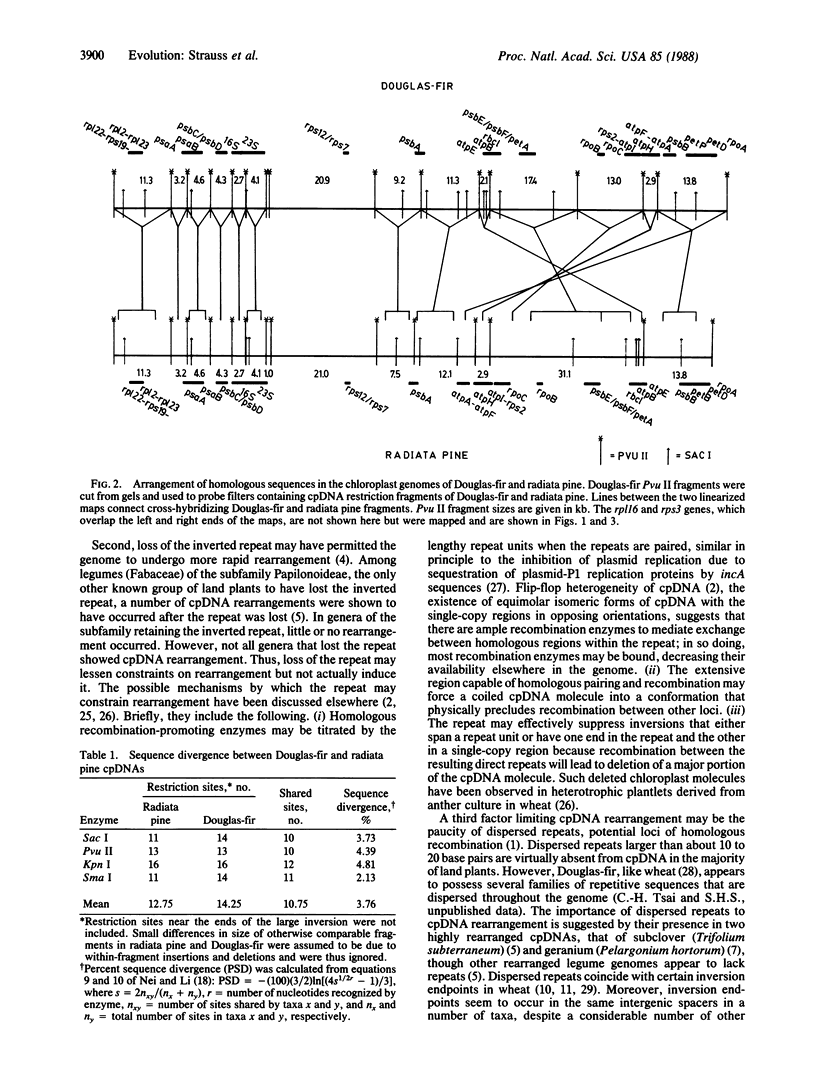
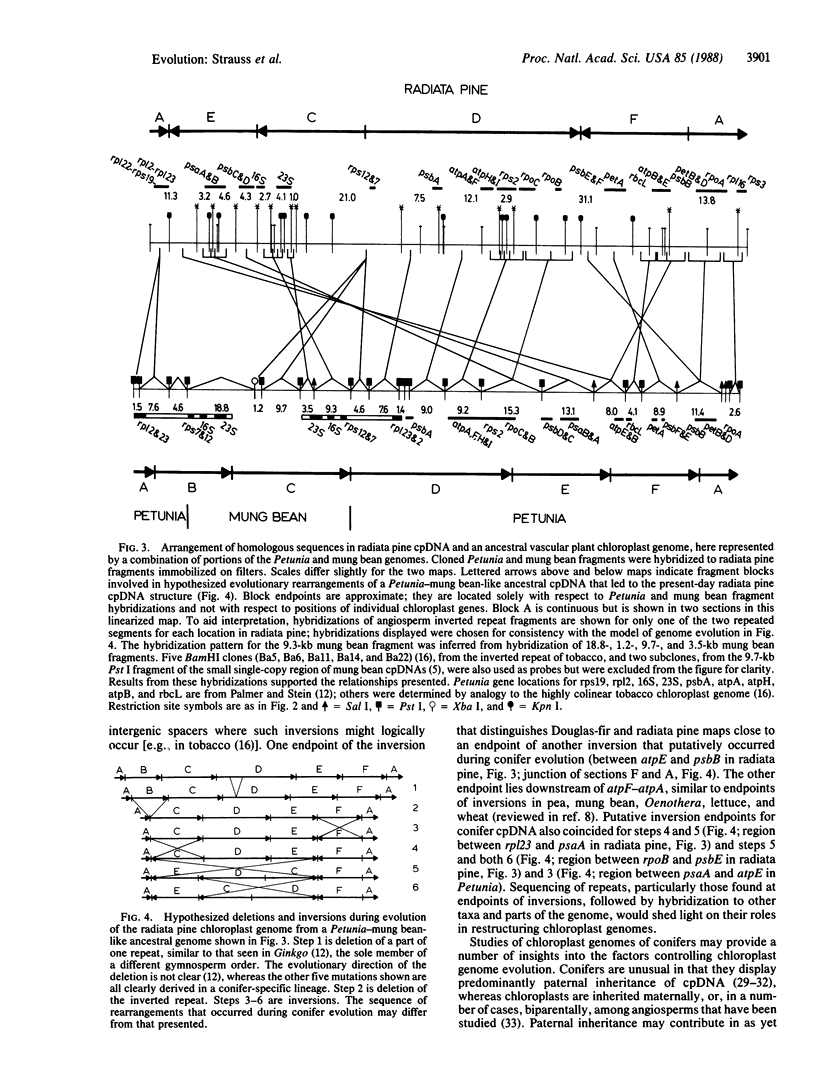
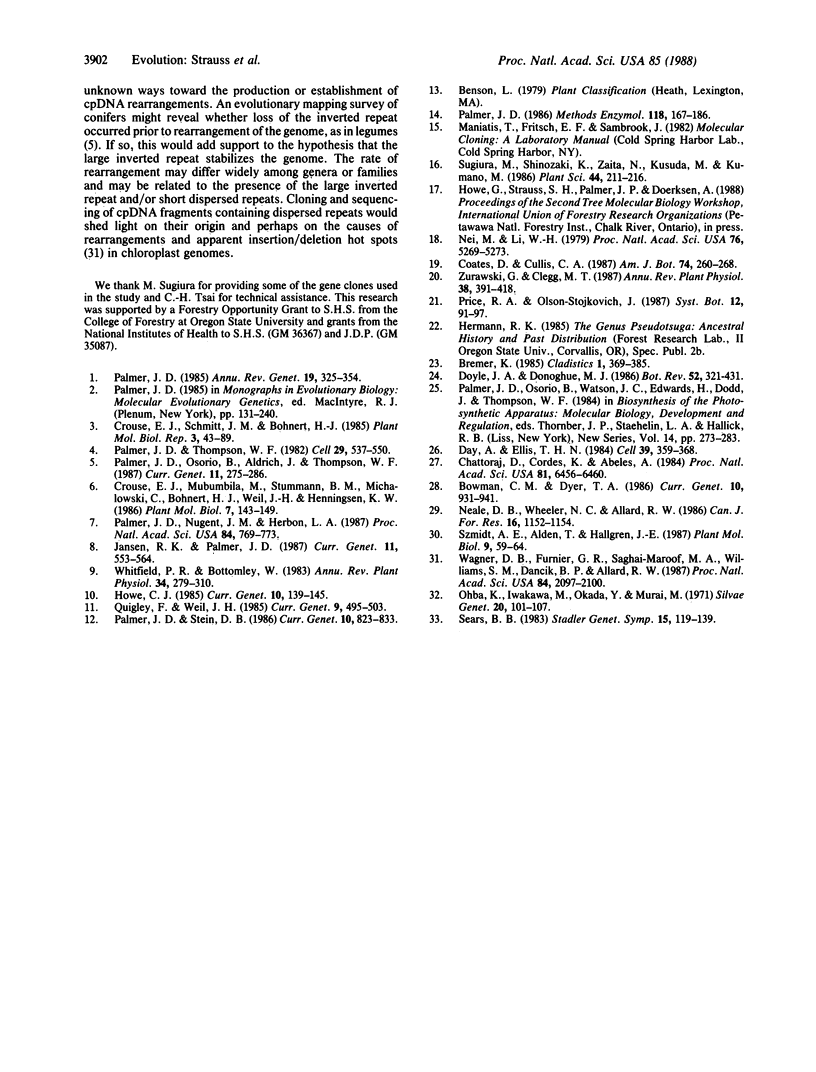
Selected References
These references are in PubMed. This may not be the complete list of references from this article.
- Chattoraj D., Cordes K., Abeles A. Plasmid P1 replication: negative control by repeated DNA sequences. Proc Natl Acad Sci U S A. 1984 Oct;81(20):6456–6460. doi: 10.1073/pnas.81.20.6456. [DOI] [PMC free article] [PubMed] [Google Scholar]
- Day A., Ellis T. H. Chloroplast DNA deletions associated with wheat plants regenerated from pollen: possible basis for maternal inheritance of chloroplasts. Cell. 1984 Dec;39(2 Pt 1):359–368. doi: 10.1016/0092-8674(84)90014-x. [DOI] [PubMed] [Google Scholar]
- Howe C. J. The endpoints of an inversion in wheat chloroplast DNA are associated with short repeated sequences containing homology to att-lambda. Curr Genet. 1985;10(2):139–145. doi: 10.1007/BF00636479. [DOI] [PubMed] [Google Scholar]
- Nei M., Li W. H. Mathematical model for studying genetic variation in terms of restriction endonucleases. Proc Natl Acad Sci U S A. 1979 Oct;76(10):5269–5273. doi: 10.1073/pnas.76.10.5269. [DOI] [PMC free article] [PubMed] [Google Scholar]
- Palmer J. D. Comparative organization of chloroplast genomes. Annu Rev Genet. 1985;19:325–354. doi: 10.1146/annurev.ge.19.120185.001545. [DOI] [PubMed] [Google Scholar]
- Palmer J. D., Nugent J. M., Herbon L. A. Unusual structure of geranium chloroplast DNA: A triple-sized inverted repeat, extensive gene duplications, multiple inversions, and two repeat families. Proc Natl Acad Sci U S A. 1987 Feb;84(3):769–773. doi: 10.1073/pnas.84.3.769. [DOI] [PMC free article] [PubMed] [Google Scholar]
- Palmer J. D., Thompson W. F. Chloroplast DNA rearrangements are more frequent when a large inverted repeat sequence is lost. Cell. 1982 Jun;29(2):537–550. doi: 10.1016/0092-8674(82)90170-2. [DOI] [PubMed] [Google Scholar]
- Quigley F., Weil J. H. Organization and sequence of five tRNA genes and of an unidentified reading frame in the wheat chloroplast genome: evidence for gene rearrangements during the evolution of chloroplast genomes. Curr Genet. 1985;9(6):495–503. doi: 10.1007/BF00434054. [DOI] [PubMed] [Google Scholar]
- Wagner D. B., Furnier G. R., Saghai-Maroof M. A., Williams S. M., Dancik B. P., Allard R. W. Chloroplast DNA polymorphisms in lodgepole and jack pines and their hybrids. Proc Natl Acad Sci U S A. 1987 Apr;84(7):2097–2100. doi: 10.1073/pnas.84.7.2097. [DOI] [PMC free article] [PubMed] [Google Scholar]


